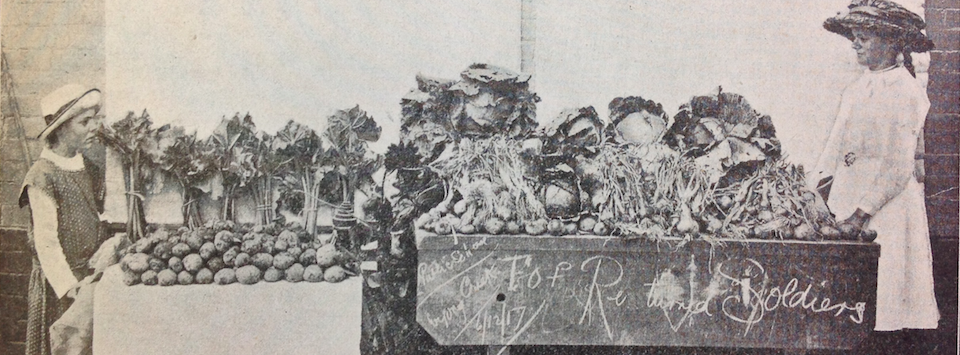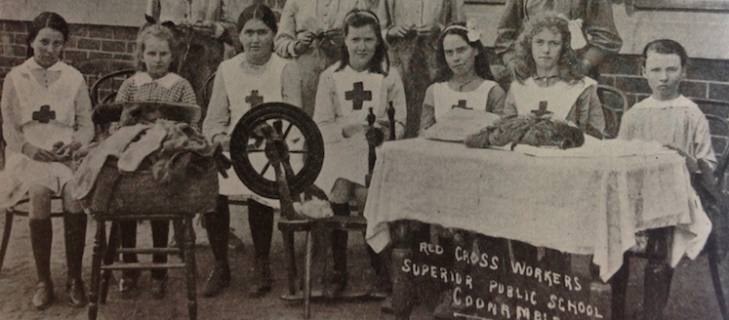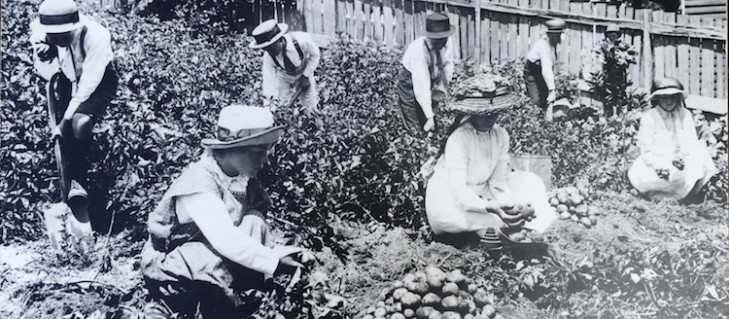NSW Schools and the ANZACs
Contribution of School Children
As fathers, brothers, teachers and neighbours left to fight the Great War, NSW school pupils took an active role in the war effort back home.
Find out more in the learning resource NSW School Children and the Anzacs.
Fundraising and Collections
Following the Anzac landings and devastation in Belgium and France, in the lead-up to Empire Day 24th May 1915, NSW public schools were urged to raise funds for the Belgian orphans through the Children’s Ten Thousand Fund. The Minister of Public Instruction encouraged each child to donate a shilling with the aim of raising £10 000. Taken enthusiastically on board, the children of NSW schools raised £29 500, an incredible effort for the time! The top 100 schools received a beautifully coloured certificate acknowledging their contribution. For more information read the Nepean Times article published on 22 May 1915 on Trove.
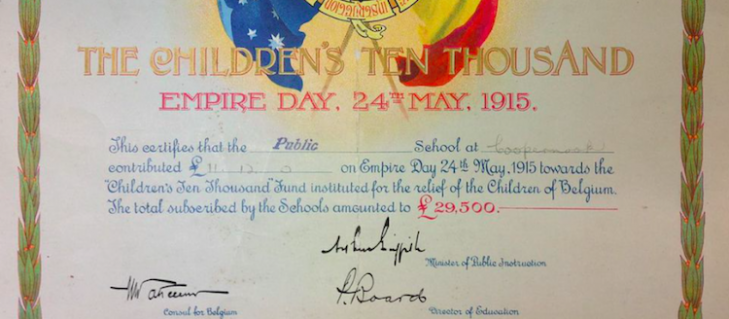
Building on empathy with the French and Belgian orphans, NSW school children donated food, made clothing, grew vegetables and held concerts and gala days to fundraise for them and other funds such as the Australian Comforts Fund.
Programs of school fundraising activities were published in the education gazettes and local newspapers, spreading ideas for raising funds and encouraging participation.
Throughout the war, schools were also fast to respond to the call for items when there were shortages such as bandages, muslin for dressings, sand bags and scrap metal.
| ‘Australia finds herself suffering from a crippling shortage of many things for which she has previously depended on the outside world. Any of these … will be welcome to several of the patriotic organisations. Bottles (jam, pickle, medicine, sauce; tins (with airtight lids, such as treacle tins); paper (any kind of paper to be re-made – some city schools collected lunch paper); magazines (these are re-covered by the Red Cross) and sent to the troops and hospitals.’ (The Education Gazette, 1-1-1918) |
Empire Day 1915
Empire Day, held annually on 24th May (Queen Victoria’s birthday), was celebrated in Australian schools from 1905. A half day holiday, there were large community picnics, sports days, street parades, pageants and tableaus. To form a tableau, children proudly dressed in costumes representing the countries of the British Empire, held flags and gathered around a central child dressed as Britannia who wore a Corinthian helmet and carried a shield covered in a Union Jack flag and a three-pronged spear (trident).
Empire Day 1915 was the first to be held in wartime and allegiance to the British Empire was strong. In tableaus during the First World War, children also dressed in Red Cross uniforms and dressed as soldiers.
Often recorded in still photography, Screen Australia’s rare film footage titled Empire Day Pageant c1915, shows children in costume at an Empire Day celebration. It also includes cadets marching at the end of the clip.
School Assemblies
The war featured heavily in school life throughout both world wars. In the First World War, daily morning or weekly school assemblies paid respects to those at war. In a period of great patriotism to the British Empire, students sang hymns and recited prayers for the soldiers, sang the national anthem and patriotic songs, recited pledges and saluted the flag. Hymns included Hymn for the Soldiers and a common prayer was Prayer for Peace.
|
NATIONAL ANTHEM God save our gracious King, Long live our noble King, God save our King; Send him victorious, Happy and glorious! Long to reign over us, God save our King. |
Additional verse God bless our splendid men, Send them safe home again, God save our men. Keep them victorious Patient and chivalrous They are so dear to us; God save our men. |
Comfort Items
Students made comfort items to send to soldiers at the front such as knitted socks, balaclavas, scarves and handkerchiefs. When wool ran out, students spun wool using various methods such as spinning wheels and drop spindles, dyed and knitted it. They tucked short messages of support into the items and packed them up and took them to the post office for mailing. Efforts were recognised through articles and photographs in The School Magazine and The Public Instruction and Education Gazettes as was recognition of those serving.
With the establishment of the Australian branch of the Red Cross in 1914, informal junior Red Cross groups were formed in NSW schools and membership was popular and active. These formed the foundation for the formal establishment of the Junior Red Cross in 1918.
Vegetable Growing
As the war continued into 1917 and 1918, families whose ‘breadwinners’ were fighting overseas, or had returned wounded, struggled to make ends meet. A Fruit and Vegetable Fund was established and school students were encouraged, through The School Magazine, to grow vegetables that would be distributed to these families.
| ‘…if Sydney boys and girls respond in their thousands, think of the great amount of food that will be produced, and of the joy which will be brought into the homes of many who have done so very much for us.’ (The School Magazine, 1-4-1918) |
Some schools established vegetable gardens and made regular contributions. Students were also encouraged to grow vegetables at home for the fund, even by growing one vegetable in ‘an old kerosene tin’. The harvest of Wyong Creek PS at Yarramalong features in the image at the top of this page and below.
Lessons
Lessons about the war were embedded into school days and being in the period of ‘the new education’, methods such as mapping, sand trays and 3D models were used to help students gain an understanding of the location and geography of Gallipoli and components of military camps.
Students also wrote compositions on topics such as ‘What I can do towards winning the war’ and calculated arithmetic problems using war supplies facts and figures. Lesson suggestions were published in the education gazettes.
Military Training
Junior Cadets
From July 1911 all boys and men aged 12 to 25 years were required by Federal law to undertake military training. Australia was the only English-speaking country to have compulsory training during peace time and the scheme operated until November 1929. (Junior Cadets ceased July 1922.)
Boys aged 12 to 14 were Junior Cadets and undertook compulsory military training at school, taught by school teachers. Junior Cadet training included the compulsory subjects of physical exercises and squad drill. Proficiency in one of miniature rifle shooting, swimming, first aid or running exercises within organised games also had to be demonstrated by Junior Cadets.
Exercises, drills and methods of instruction were prescribed in the Australian Military Forces Junior Cadet Training Textbook, 1916. Teachers could undertake special instruction in how to train Junior Cadets. If proficient, the men could hold rank within the Junior Cadet scheme as teacher-officers.
In NSW public schools at the start of the scheme, Junior Cadets undertook 15 minutes physical activity on four days of the week and 30 minutes of drill on one day. Girls and boys under 12 years usually participated in this as well. Daily physical training was intended to build a strong, fit and moral nation. ‘In bringing the body into the highest state of physical perfection various moral qualities are brought into play.’ (Goulburn Evening Penny Post, 20-7-1915). Physical training included both exercises and organised games to enable both strong and weak students to fully participate.
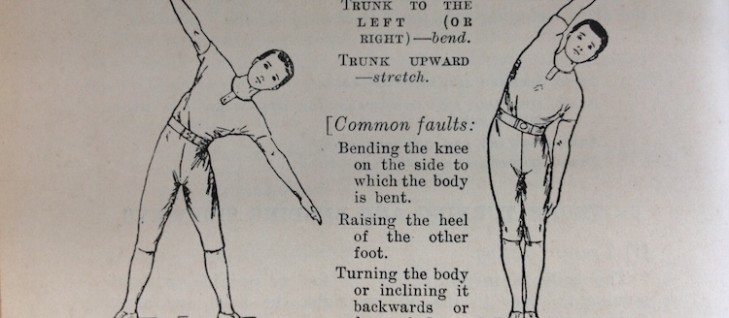
Boys aged 15 to 17 were required to register as Senior Cadets and men aged 18 to 25 registered for the Citizen Military Force. They undertook military training at their local parade ground or drill hall twice weekly and attended camps. Fines and imprisonment were imposed for bad conduct or ‘drill shirking’.
Find out more in the learning resource NSW School Children and the Anzacs.
Resource Links
Learning resource – NSW School Children and the Anzacs – an expanded version of this page with learning activities and primary sources – NSW Schoolhouse Museum of Public Education
Online – Patriotic Fundraising: Public School Children Help Out – digitised sources and information – State Records NSW
Film – Engineers Camp, Moore Park, Sydney 1914-1918. Cadets marching shown at 00:00–02.00, and semaphore flag signalling shown at 05:00–06:30 – Australian War Memorial
Film – Empire Day Pageant c1915 – Screen Australia
Online – Research and Adopt a Veteran – resource applying the historical inquiry process to research a local First World War veteran – NSW Department of Education
Online – How to research a WW1 soldier – step-by-step guide to put people to the names on your school honour board or local First World War memorial – Australian War Memorial
Online – Commemorating Anzac Through Engaging Learning – resource containing background information with images and teaching and learning activities K-10 across all KLAs – NSW Department of Education
Manuscript – NSW Public School Educators in WW1 & WW2 by Thomas White (PDF 109.1MB). This original manuscript, written by Thomas White in the 1950s, details biographical details of NSW public school teachers and education department officers who served in the First and Second World Wars. In Part 1, from page 348, First World War contributions made by NSW public school students and staff are outlined – NSW Department of Education
Article – Khaki in the Classroom: Compulsory Junior Cadet Training in Australian Schools, 1911-31 by Craig Stockings in History of Education Review Vol. 37:1 January 2008
Book – Soldier Boys: The militarisation of Australian and New Zealand Schools for World War 1 by Maxwell N Waugh. Melbourne Books, 2014

